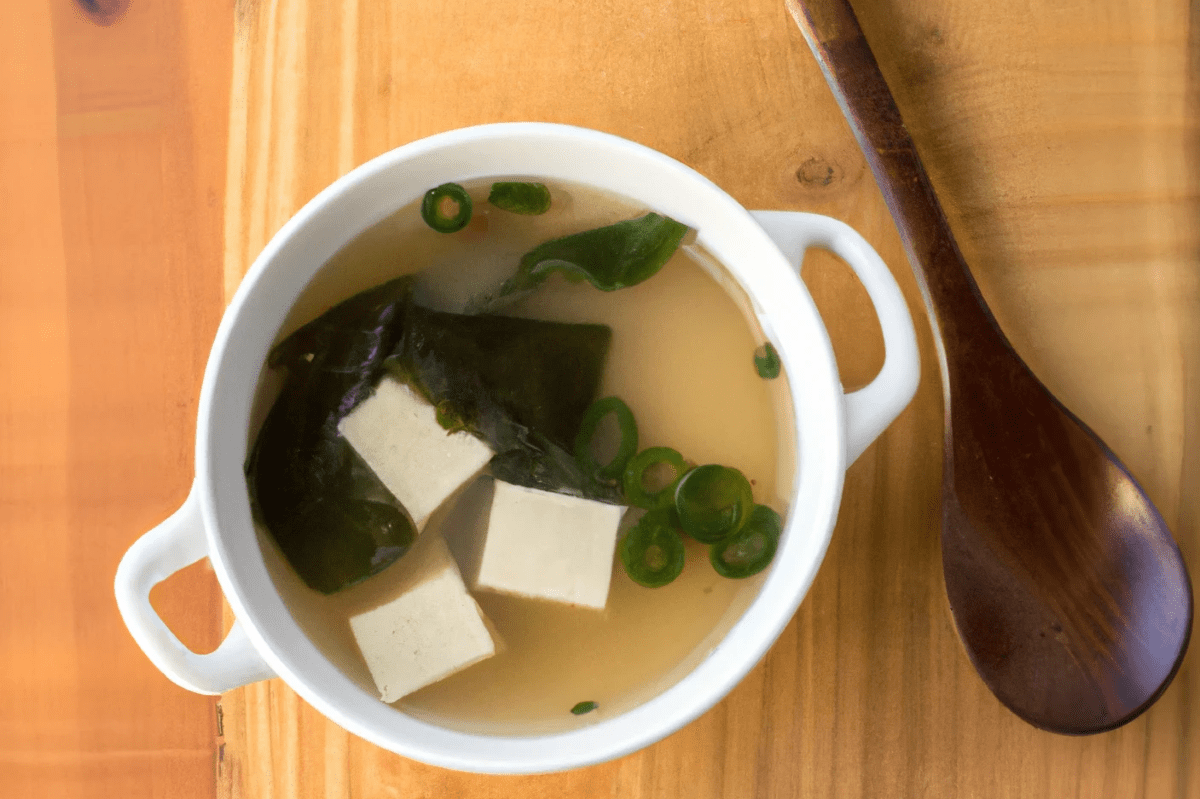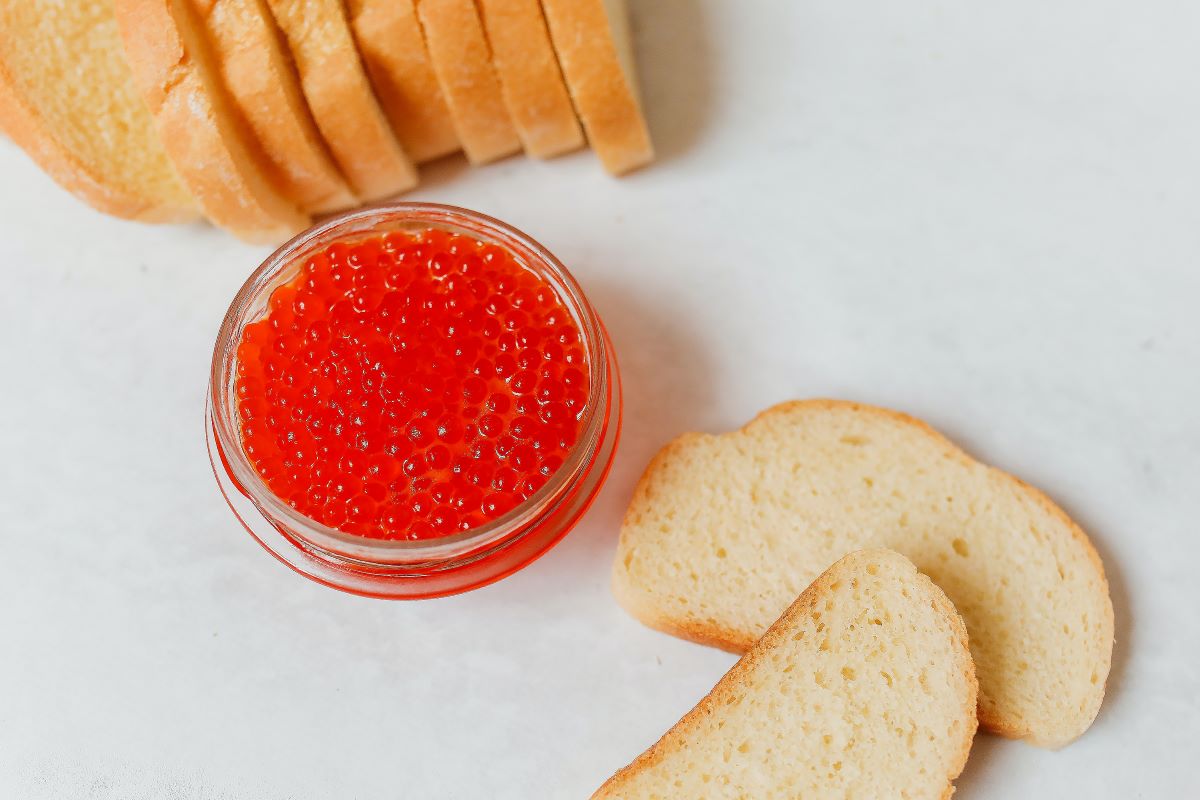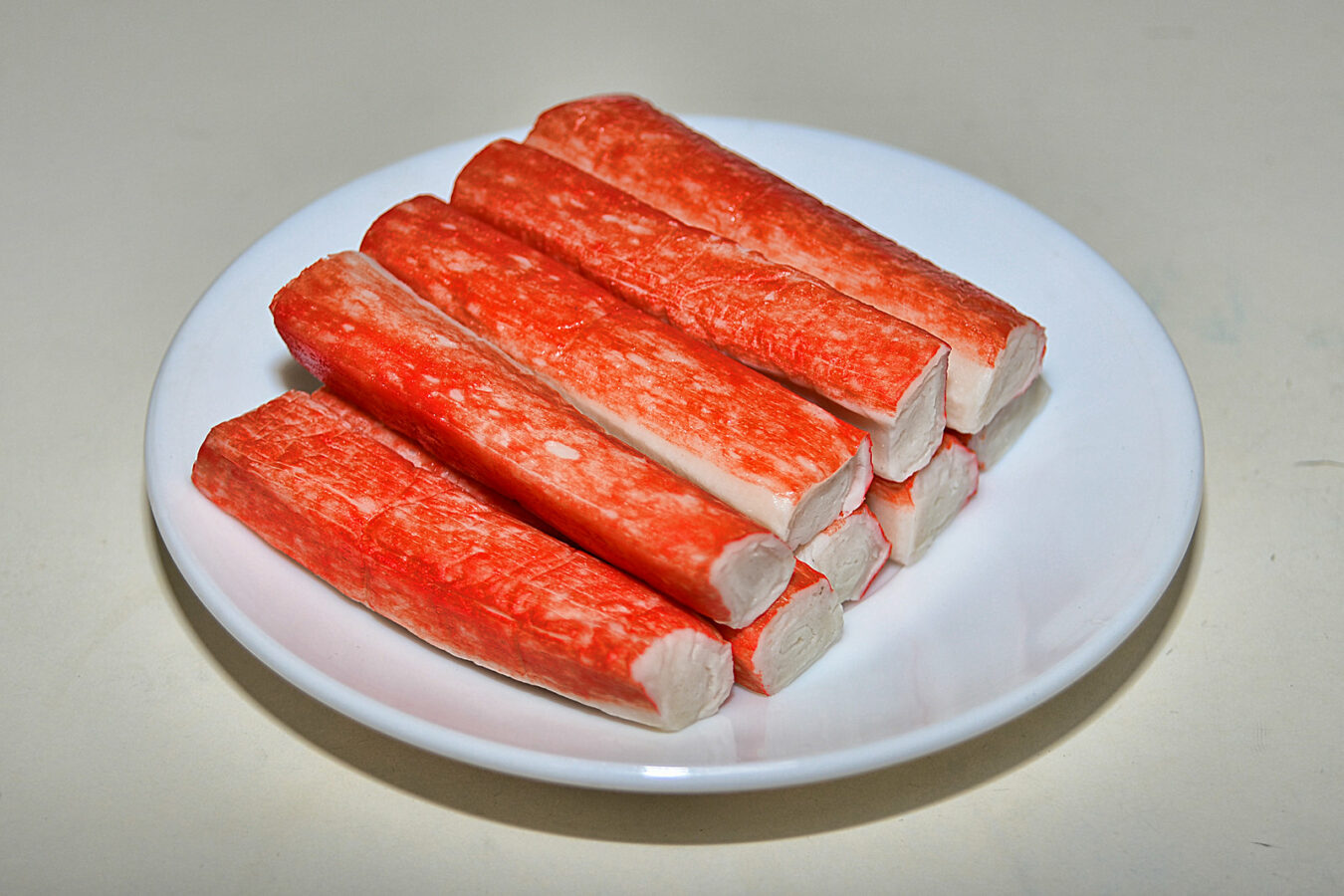Table of Contents
Is Miso Soup Vegan?
Traditional miso soup from Japan is not vegan, because it uses fish-based dashi in its preparation. However, the miso paste itself is generally vegan, as long as it doesn’t contain any dashi or animal products.
Nowadays, there are vegan alternatives to fish-based dashi, such as kombu dashi and shiitake dashi. Both of these options are vegan-friendly and enable you to enjoy this staple in Japanese cuisine.
Non-Vegan Ingredients or Processes
Miso soup traditionally consists of base ingredients like miso paste, made from fermented soybean paste, and dashi, a type of Japanese stock. The most common dashi is fish-based, made from dried fish and seaweed. Some miso soup recipes also feature toppings like bonito flakes (dried fish flakes) or pieces of seafood, such as shrimp or clams. In different regions, miso soup may include tofu, vegetables, soba noodles, diced green onions, or even pork.
American and European versions of miso soup often involve dissolving miso in chicken or fish stock, both of which are not vegan.
Controversies or Gray Areas within the Vegan Community
The main controversy surrounding miso soup’s vegan status stems from the use of fish-based dashi used during preparation. Naturally, miso soup made with fish-based dashi is not vegan. However, some people on vegan-adjacent diets may consider it acceptable, so long as the impact on the dish is minimal.
While most common types of miso soup are not considered vegan, due to their use of fish-based dashi, there are vegan-friendly alternatives available, such as vegan dashi stalks. Vegan dashi stalks only use kelp and shiitake mushrooms.
Types of Miso Paste
White Miso
The most common type of miso, white miso paste has a mild and slightly sweet flavor, which is derived from its shorter fermentation process and a higher rice-to-soybean ratio. The flavor makes it perfect for soups, marinades, and dressings. It is also known as shiro miso. Generally, white miso paste is considered vegan.
Red Miso
Red miso, or aka miso, is distinguished by its dark color and deep umami flavor. This miso variety often includes barley or rye in addition to rice and has the longest fermentation time, ranging between one and three years. While red miso is typically vegan, some subtypes like aka dashi red miso paste contain dashi, so be cautious of these non-vegan variations.
Yellow Miso
Yellow miso, also known as shinsu miso, differs from white miso as it undergoes a longer fermentation process and contains higher amounts of soybeans and barley. Its flavor is saltier and more acidic than white miso. Due to its salty taste, yellow miso serves as a versatile flavoring or condiment. In general, yellow miso is considered vegan.
Genmai Miso
A specialty miso that gets its flavor from brown rice instead of white. It is generally vegan, as its base is made from brown rice.
Hatcho Miso
Another specialty miso — it only contains fermented soybeans and salt which give it an intense flavor. Thanks to its ingredients, it is considered vegan.
Types of Dashi
Classic Awase Dashi
The most common and versatile seafood-based stock combines kombu (dried kelp) and katsuobushi (dried bonito flakes). However, it is not suitable for vegans.
Kombu Dashi
This vegan and vegetarian-friendly stock primarily consists of kombu, offering a gentle flavor. Additionally, it is the easiest stock to prepare.
Katsuo Dashi
Known for its aroma and flavor, this dashi is a seafood-based stock that’s made from katsuobushi (dried and fermented skipjack tuna/bonito that is shaved into thin flakes). Its composition makes it unsuitable for vegans.
Iriko Dashi (Niboshi Dashi)
This seafood-based stock is made from iriko/niboshi (dried baby anchovies/sardines). Mainly known for its strong fishy aroma and taste, and is more affordable than kombu and katsuobushi. This dashi is not vegan-friendly.
Shiitake Dashi
Another vegan/vegetarian-friendly stock. It is made from rehydrating dried shiitake mushrooms. The soaking liquid is rarely used on its own, and is often combined with kombu dashi or katsuo dashi for enhanced flavor. It is generally vegan, so long as you combine it with kombu dashi!
Vegan-Friendly Alternatives and Variations
Recently, there have been vegan-friendly alternatives to traditional miso soup. These vegan-friendly alternatives use plant-based ingredients in place of dashi and other toppings. Some examples of vegan-friendly substitutes are mushrooms and seaweed, both of which replace the fish in traditional miso soup.
Although miso paste is typically vegan, miso soup served in restaurants often isn’t, due to the inclusion of dashi. Nowadays, many grocery stores provide vegan miso soup alternatives that are easy to prepare at home by making a few simple ingredient substitutions.
Store-Bought Alternatives
Nowadays, grocery stores carry vegan miso soup brands, such as Tsubi Soup, Hikari Miso, and Clearspring Miso Soup. These products replace traditional dashi with plant-based ingredients like seaweed and shiitake mushrooms, ensuring they are free from animal-derived ingredients.
Tips for Identifying Vegan-Friendly Options
Labels:
Look for spreads that explicitly state “vegan” or “plant-based” on the packaging. Many products now carry a vegan-friendly logo or label. These labels help indicate the product does not contain any animal-based ingredients and has not been tested on animals.
Check the ingredients list:
Make sure to carefully review the ingredients of the packaging, ensuring the absence of animal-derived products such as fish or seafood-based dashi.
Use store apps or websites:
Many grocery stores offer online platforms that enable product filtering based on dietary preferences, simplifying the process of locating vegan products before shopping.
By following these guidelines, you can confidently select a vegan-friendly miso that aligns with your dietary choices.
Homemade Versions
To make vegan miso soup, substitute fish-based dashi with plant-based alternatives like kombu (dried kelp) or shiitake mushrooms. For toppings, use tofu, green onions, or seaweed instead of seafood or bonito flakes. These substitutions will give you kombu dashi miso and shiitake dashi miso.
You can make both kombu dashi and shiitake dashi at home! Refer to these articles by Just One Cookbook on how to create your own kombu dashi and shiitake dashi.
How to Use Vegan Alternatives in Recipes
You can typically use vegan alternatives for miso soup in a 1:1 ratio with traditional ingredients. For instance, if a recipe requires 1 cup of fish-based dashi, you can substitute it with 1 cup of kombu dashi or shiitake dashi.
How Miso Soup is Made
This traditional Japanese dish is made from miso paste (fermented soybean paste), dashi (broth), and various toppings or garnishes.
To make miso soup, first combine water and dashi granules in a medium saucepan over medium-high heat, and then bring the mixture to a boil. Next, reduce the heat to medium and stir in the miso paste. Feel free to add toppings such as tofu. After separating the layers of green onions, add them to the soup. Finally, allow the soup to simmer gently for 2 to 3 minutes.
Primary Ingredients
Miso soup’s main ingredients are miso paste and dashi. However, it is easy to make miso soup without dashi, or with a vegan alternative to dashi.
Secondary Ingredients
Miso soup often contains common secondary ingredients, such as tofu, seaweed, green onions, and various other vegetables or garnishes.
Production Process
Miso soup is usually made by dissolving miso paste into hot dashi and adding your desired toppings or garnishes. The dashi broth may be made from scratch or with store-bought dashi powder. Be sure to check the ingredients of the dashi to ensure it doesn’t contain any animal derivatives.
Sourcing and Ethical Considerations
Environmental Impact
Miso soup’s environmental impact can vary depending on the ingredients used. Plant-based miso soup has a lower environmental impact compared to traditional miso soup that’s made with fish-based dashi or seafood toppings. This is due to the lower carbon footprints of plant-based ingredients.
Labor Practices
Labor practices in producing miso soup ingredients can differ based on the source. It’s essential to conduct research and select brands that emphasize fair labor practices and sustainable sourcing when purchasing miso paste, dashi, and other ingredients.
FAQ
Is miso paste vegan?
Yes, miso paste is vegan since it’s made from fermented soybeans, rice, or barely. However, there are some varieties that may come with fish-based dashi mixed in, so it is important to always check the ingredients and labels.
Can I make miso soup without dashi?
Yes, you can make miso soup without dashi. You can always substitute fish-based dashi with plant-based ones like kombu and shiitake dashi. Alternatively, you can mix water with soy sauce and mirin for a simpler version.
Are instant miso soup packets vegan?
Some instant miso soup packets are vegan, while others may contain fish-based dashi or non-vegan toppings. Always check the ingredients and look for any “vegan” or “vegetarian” labels on the packaging.







